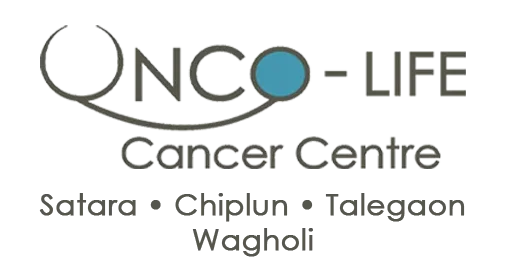Modern cancer care has evolved from “cut–burn–poison” (surgery, radiotherapy, chemotherapy) to precision medicine that matches treatment to tumor biology. Targeted drugs, hormone therapy, and now modern cancer treatments for immunotherapy have reshaped outcomes. Immunotherapy doesn’t replace older tools—it’s integrated with them: before surgery (neoadjuvant), after (adjuvant), or alongside chemo/radiation to deepen and prolong response.
Its relevance is rising globally and in India, where tertiary centres increasingly use biomarker-guided immunotherapy for lung, melanoma, kidney, urothelial and head-and-neck cancers. Access is expanding via tumour boards, clinical trials, and payer schemes, though affordability and biomarker testing remain key to equitable adoption.
How Immunotherapy Works in Cancer Treatment
Your immune system can recognize abnormal cells, but tumors evolve immune-evasion tricks (e.g., PD-L1/CTLA-4 checkpoint signals) to switch T-cells off. How immunotherapy works in cancer treatment is by reversing this:
- Checkpoint inhibitors (anti-PD-1/PD-L1, anti-CTLA-4) release the brakes on T-cells.
- CAR T-cell therapy engineers a patient’s T-cells to hunt specific targets.
- Cancer vaccines and cytokines stimulate anti-tumor immunity. This immunotherapy mechanism can yield durable control with fewer long-term toxicities than some chemotherapies. Challenges remain: not all tumors are “inflamed,” resistance develops, and immune-related side effects (e.g., colitis, pneumonitis, thyroiditis) need expert management and timely steroids. Infographic idea: a flow diagram showing (1) tumor antigen → (2) T-cell activation → (3) checkpoint “brakes” → (4) drug blocking PD-1/PD-L1 → (5) T-cell killing; side panel: CAR T manufacturing loop (collect → engineer → expand → infuse).
Cancer treatment has evolved dramatically over the past few decades, offering patients a range of options that can be tailored to their specific needs. From traditional methods like surgery to cutting-edge approaches like immunotherapy, modern cancer treatments aim to improve outcomes and enhance quality of life.
This comprehensive guide explores the various treatment modalities available today.
Surgery
Surgery is one of the oldest and most common forms of cancer treatment. It involves physically removing the tumor and, in some cases, surrounding tissue to ensure complete eradication of cancerous cells. Surgery can be curative, especially when the cancer is localized and detected early. Advances in surgical techniques, such as minimally invasive laparoscopic surgery and robotic-assisted surgery, have made procedures safer, reduced recovery times, and minimized scarring. For instance, robotic surgery provides greater precision and control, which is particularly beneficial for delicate operations like prostate or gynaecologic surgeries.
Radiation Therapy
Radiation therapy uses high-energy particles or waves, such as X-rays, gamma rays, or proton beams, to destroy or damage cancer cells. It can be used as a standalone treatment or in conjunction with other treatments like surgery or chemotherapy. Modern advancements in radiation therapy, such as Intensity-Modulated Radiation Therapy (IMRT) and Tomotherapy, allow for precise targeting of tumors while sparing healthy surrounding tissues. Proton therapy, a newer form of radiation, is especially useful for treating tumors in sensitive areas like the brain, where traditional radiation could cause significant damage to healthy tissue.
Chemotherapy
Chemotherapy involves the use of drugs to kill rapidly dividing cancer cells. It can be administered orally, intravenously, or directly into a specific area of the body. Chemotherapy is often used to treat metastatic cancer (cancer that has spread to other parts of the body) and can be combined with other treatments to enhance efficacy. Recent advancements in chemotherapy include targeted delivery systems, which aim to reduce side effects by focusing the drug’s action on cancer cells while minimizing impact on healthy cells.
Immunotherapy
Immunotherapy is a ground-breaking treatment that harnesses the body’s immune system to fight cancer. It includes various approaches, such as checkpoint inhibitors, CAR T-cell therapy, and cancer vaccines. Checkpoint inhibitors, like pembrolizumab and nivolumab, work by blocking proteins that prevent the immune system from attacking cancer cells. CAR T-cell therapy involves modifying a patient’s T-cells to recognize and destroy cancer cells. Cancer vaccines, either therapeutic or preventative, stimulate the immune system to attack cancer cells.
Hormone Therapy
Hormone therapy is used to treat cancers that are driven by hormones, such as breast and prostate cancers. This treatment either lowers the levels of hormones in the body or blocks their effects on cancer cells. For example, medications like tamoxifen or aromatase inhibitors are used to treat hormone-receptor-positive breast cancer, while drugs like leuprolide or anti-androgens are used for prostate cancer. Hormone therapy can be used alone or in combination with other treatments to reduce the risk of cancer recurrence.
Stem Cell Transplant
Stem cell transplants, also known as bone marrow transplants, are used to restore the body’s ability to produce healthy blood cells after high doses of chemotherapy or radiation therapy. This treatment is particularly useful for blood cancers like leukemia, lymphoma, and multiple myeloma. There are two main types of stem cell transplants: autologous (using the patient’s own stem cells) and allogeneic (using stem cells from a donor). Advances in stem cell transplants, such as reduced-intensity conditioning, have made this treatment option more accessible and less toxic for patients.
Adjunctive Therapy
Adjunctive therapy, also known as combination therapy, involves using more than one type of treatment simultaneously to combat cancer. This approach can enhance the effectiveness of individual treatments and improve patient outcomes. For instance, combining surgery with chemotherapy or radiation can help eliminate residual cancer cells and reduce the risk of recurrence.
Similarly, integrating targeted therapy with immunotherapy can enhance the immune system’s ability to recognize and attack cancer cells more effectively. By using a multi-faceted treatment plan, doctors can tailor the approach to the specific characteristics of the cancer, potentially improving survival rates and reducing the likelihood of resistance to a single treatment modality.
Conclusion
The landscape of cancer treatment is continuously evolving, with each approach offering unique benefits and applications. From traditional methods like surgery and radiation to innovative therapies like immunotherapy and adjunctive therapy, modern oncology provides a multi-faceted arsenal against cancer.
Personalized treatment plans that combine these modalities offer the best chance for successful outcomes. As research continues to advance, Onco-Life Cancer Center remains at the forefront of the latest developments in cancer treatment. As one of the leading cancer hospitals in Pune, we are dedicated to providing our patients with a broad range of cutting-edge treatment options. Our mission is to optimize cancer treatment and ensure the best patient outcomes for those suffering from this devastating disease.
Frequently Asked Questions
blog – Modern Cancer Treatments: From Surgery to Immunotherapy
What Is Immunotherapy, And How Is It Different From Chemotherapy?
Immunotherapy activates your immune system to attack cancer; chemotherapy directly kills fast-dividing cells. Immunotherapy can produce longer, deeper remissions in selected cancers, but works best when biomarkers predict benefit. Chemotherapy often acts faster but with broader side effects. Many patients receive combined or sequenced regimens for synergy.
Which Cancers Respond Best To Immunotherapy Treatments?
Strong evidence exists in melanoma, lung, kidney, urothelial, head-and-neck, lymphoma, and MSI-H/dMMR tumors across sites. Response depends on biomarkers (PD-L1, MSI-H, tumor mutational burden) and tumor “immune warmth.” Your oncologist will test for these before recommending a checkpoint inhibitor or a clinical trial.
How Long Does Immunotherapy Take To Show Results?
Timelines vary. Many patients are reassessed at 6–12 weeks using scans and symptoms. Some see early shrinkage; others show pseudoprogression (appearing larger before improving). Decisions combine imaging, labs, and clinical status. Treatment often continues for up to 1–2 years if responding and tolerated.
Can Immunotherapy Be Combined With Other Cancer Treatments?
Yes. It’s frequently paired with chemotherapy, targeted therapy, or radiotherapy to increase response and prevent escape pathways. Integration depends on cancer type, stage, and fitness. In curative settings, it may be used before/after surgery; in metastatic disease, combinations aim for deeper, more durable control.
Are There Any Risks Or Side Effects Associated With Immunotherapy?
Immune activation can inflame organs: skin rash, thyroid imbalance, diarrhea/colitis, hepatitis, pneumonitis are typical examples. Most are manageable if detected early with steroids or hormone replacement. Report new cough, breathlessness, persistent diarrhea, jaundice, severe fatigue, or high fevers promptly; do not self-medicate.
Is Immunotherapy Widely Available In India For Cancer Patients?
Checkpoint inhibitors are available at major tertiary cancer centres and many private hospitals in metros and tier-2 cities; access is growing. CAR T-cell therapy is emerging at select institutes. Coverage varies—some patients use government schemes/insurers, others self-pay. Discuss costs, eligibility, and biomarkers with your oncologist and hospital financial counsellor.


